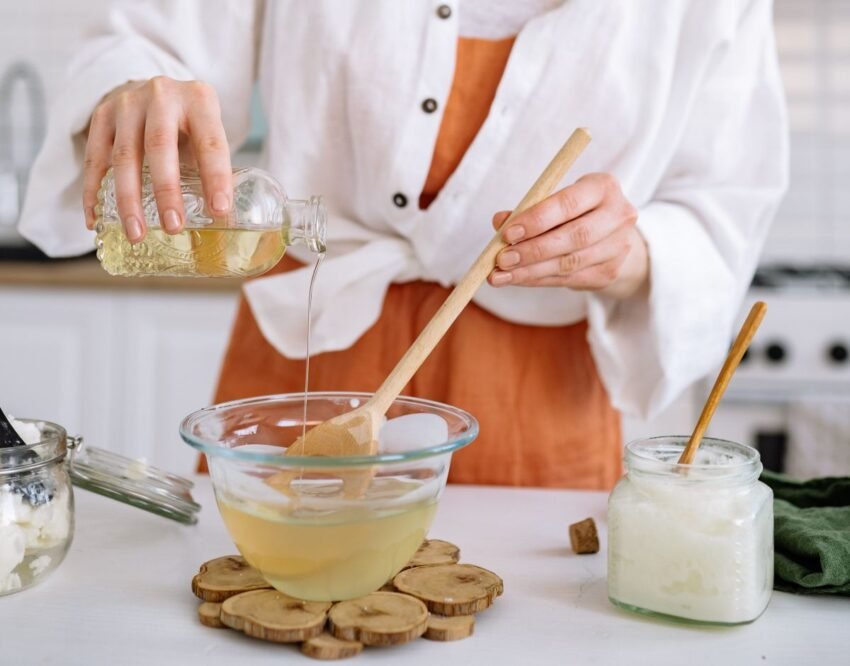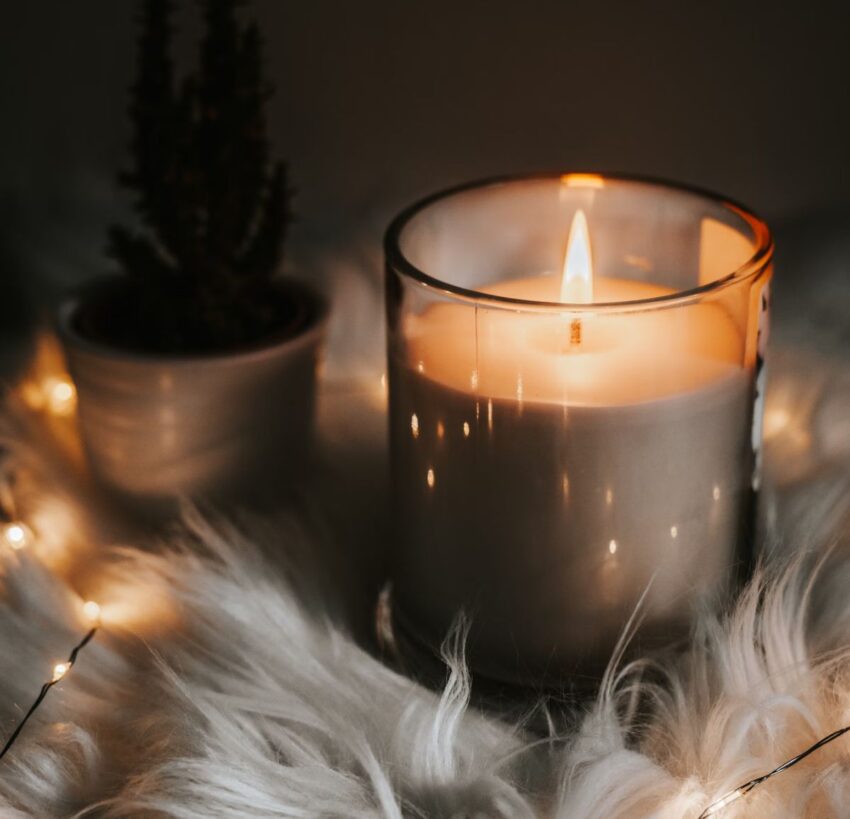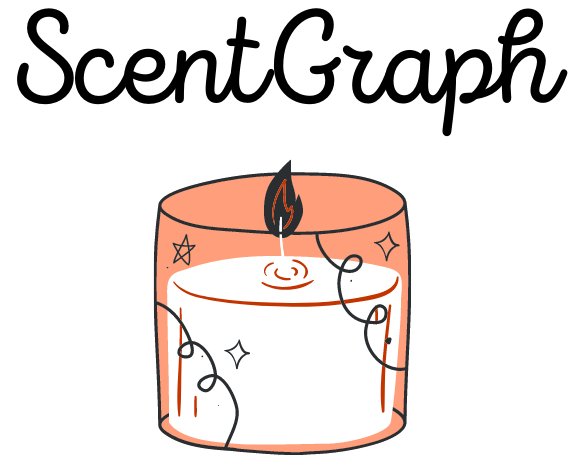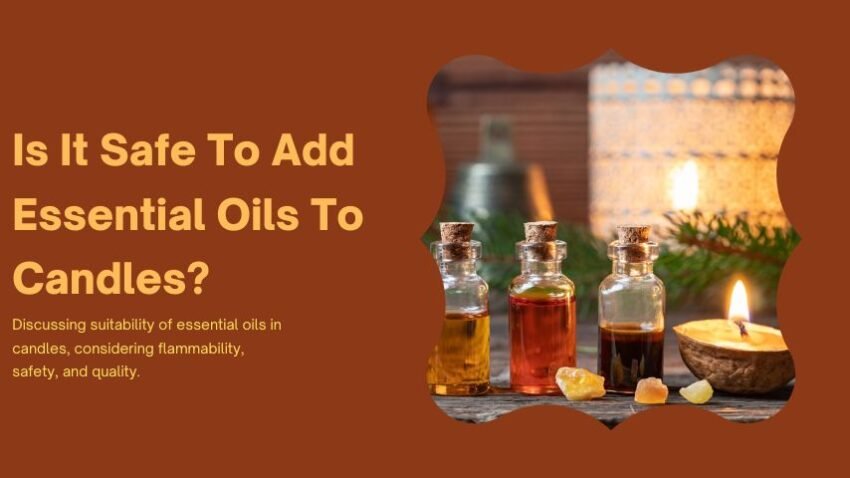Essential oils are seemingly everywhere. Their runaway success has taken the market by storm. You can find essential oils in a lot of products like cosmetics, diffusers, and candles.
The latter seems like a natural choice. After all, the benefits of essential oils and their fragrance would work well with scented candles. Straightforward as it may seem, is it safe to add essential oils to candles?
Turns out, it is not straightforward at all! Essential oils are notorious for not working all that well with candle waxes, flame, and heat. Candle makers usually prefer to work with fragrance oils over essential oils. Although, some essential oils might be used occasionally.
So, while there are essential oils used with candles, it often involves careful crating and jumping through a few hoops to get things working as they should. .
Let’s see what factors affect the use and safety of essential oils in candles.
Factors And Considerations That Decide The Safety Of Essential Oils In Candles
Before we choose essential oils worthy of scented candles, let’s consider how the oil will work with the environmental factors in a candle. In a conventional candle, you can expect the essential oil to be exposed to a flame, heat, the wick, the wax, and the container.
For an essential oil to be added to a candle, it should play well with all these components.
Then there’s one more component that holds the key – the scent! If we’re using essential oils in a candle, we would expect a wonderful scent. How well the oils work in this sense is very important.
Are Essential Oils Flammable In Candles?
When essential oils become part of a candle, they’re bound to come in contact with a flame. So, what happens when the heat of the flame meets essential oils? Would the essential oil burn uncontrollably?
This is actually a very interesting question that shows quite surprising results.
Most essential oils are flammable. Some people and publications also describe them as “highly flammable.”
Several essential oils get classified as Category III flammable liquids. According to OSHA, category III flammable liquids have a flashpoint above 73.4 °F (23 °C) and at or below 140 °F (60 °C).
To be clear, the flashpoint is the temperature at which a liquid can catch fire and continue burning even if the original heat source is removed.

The popular essential oils in this category include (but aren’t limited to) lavender, citrus, tea tree oil, rosemary, bergamot, eucalyptus, frankincense, etc. Clearly, these essential oils would be flammable if they come in contact with a burning candle.
However, these might be used in candles and we don’t see them blowing up. So, why’s that?
In a well-made candle, essential oils are blended well into the wax. Generally, there will be about 5% of essential oil in a block of wax. For example, a soy wax candle can take a 5-10% load of essential oils.
This small quantity of essential oils isn’t enough to ignite when exposed to the wick. As the wax pool melts, some portion of the oils also evaporates with the heat, further reducing the amount of essential oils reaching the wick. The oil that reaches the wick can burn without incidence.
To put it simply, even for essential oils labeled as Category III flammable liquids, the possibility of fire is low, when used properly in a candle.
The categorization is more important for transportation and storage. The use of these essential oils in candles is usually safe, at least with regards to the flammability.
To contrast with the lower flashpoint oils, some essential oils that have a flashpoint above 150°F are basil, ylang-ylang, patchouli, lemongrass, geranium, etc. You might see many essential oil candles to prefer these oils and fragrances.
Can You Add Essential Oils To A Burning Candle?
One technique many people use to diffuse essential oils is to add some to a burning candle.
This method employs thick unscented candles that have a large and wide wax pool. Once the candle has been burning for long enough (usually about an hour), it will reach its ideal wax pool size, assuming there is no tunneling.
At this point, it’s possible to (carefully) add a drop or two of your choice of essential oil to this wax pool. The hot wax will help diffuse the oil, without a significant portion of the oil reaching the wick to burn.
You can get a strong scent with this method. Additionally, it can use a candle to diffuse essential oils without going through all the trouble of mixing essential oils with wax to make a scented candle.

After a few minutes, the oil will dissipate and the candle will maintain its original composition. It might even be possible to use a different essential oil for the next session.
Personally, I’m not a fan of this method. There are much better ways to diffuse essential oils, like using a diffuser! People sometimes wonder if they can use diffuser oil (essential oils) in candles. While it is possible, it’s better to keep their use limited to a diffuser.
And remember, essential oils are flammable, so bad placement of the oil in the wax pool could have unintended consequences.
I wouldn’t call it dangerous, but I will say it’s a needlessly complicated process especially when better options are readily available.
How Well Do Essential Oils Work With Wax
For a scented candle to work well, the oil and wax should blend well and create a balanced or homogeneous mixture. And therein lies the rub.
Essential oils are notorious for not playing well with candle wax. Beeswax, paraffin, soy wax, palm wax – you name it, and there’s a good chance that essential oils don’t play well with it.

For example, soy wax is usually heated to 175-185 °F before adding scents to it. This temperature is best suited for adding fragrances and colors or dyes for soy wax candles. However, this temperature is higher than the flashpoint of many essential oils, especially those belonging to Category III, as discussed in the previous section.
This begs the question – how to add essential oils to candle wax?
Many candle makers reduce the temperature of soy wax to about 140°F before adding the essential oils. The oils aren’t at a risk of being volatile at this temperature. Since the lower temperature isn’t ideal, there can be problems in uniformly mixing oil and wax.
Even with essential oils that have a higher temperature flashpoint, mixing wax with oil can be a problem. In many cases, candle makers might see the candle excessively sweating oil during the curing process. Or, the oil and wax may separate for other reasons.
Candle makers do overcome these problems and make good candles with essential oils. However, the process is more difficult and demanding compared to conventional methods.
While it might be tough to get wax and essential oils to work together, this isn’t a safety risk for candles.
Choosing The Wick For Essential Oil Scented Candles
Choosing the right wick has a direct impact on the performance of a candle. If the wick is too thin, the candle may not generate enough heat to create a suitably-sized wax pool. This can result in candle tunneling, or other problems.
On the other hand, if the wick is too thick, it can put out an overly strong and hot flame. This can cause too much heat in the candle. In the case of candles with glass containers, it can even result in a candle explosion.
Given the low flashpoint of most essential oils, controlling temperatures is very desirable for safety.
Most candles with essential oils prefer to work with a thinner wick. This helps keep temperatures relatively low. The relatively lower temperatures make the candle safe. They also make it easier to use essential oils with low flashpoints.
What Happens To Essential Oils When They Burn?
Here’s the biggest question on the use of essential oils in scented candles. How do these oils react to being burnt by the candle’s flame?
This answer can be a bit controversial and there appears to be a lack of consensus.
One opinion says that since essential oils are natural products, they don’t have a negative impact after burning. I’m not a fan of this reasoning. Yes, natural is good, but blanket reasoning isn’t. Food is good, but burnt food isn’t.
The other opinion, which is more plausible, is that essential oils undergo a change after burning. This is a more sensible approach, since we’re all aware that objects undergo changes after combustion.
This approach considers that heat or a flame breaks down essential oils. Since the oils are broken down by heat, their beneficial aspects (perceived or actual) no longer remain in play.
As such, if you’re burning a scented candle for the natural benefits of essential oils, you might find the exercise futile.
Their use in candles might still be safe, but without any beneficial aspects. In some aspects, some essential oils might even turn toxic when burnt, which increases associated risks of using these oils in candles.
There is a lack of comprehensive scientific documentation on the changes essential oils undergo in a candle. However, there is a study that discusses the effects of heat on essential oils.
According to this research, the increase in temperature has a marked effect on the stability of essential oils. Autoxidation and decomposition of the oils might happen more easily as the temperature rises.
They also point out that temperature, oxygen availability, and light have an impact on the stability of these oils. As we know, all these are readily available in a candle!
Understanding The Hot Scent Throw In Essential Oil Candles
Something you will notice often when using scented candles made from essential oils is that they might have a great cold throw, but the hot throw is weak.
The cold throw is the scent you get from a candle when it’s not burning, while the hot throw represents the scent when candles burn.
Essential oil candles are known to have a poor hot throw. You might notice a whiff of the scent, but it’s rarely strong or noticeable. Stronger scents like lemongrass essential oil can make their presence felt, but the hot throw remains questionable.
In many cases, essential oils used in candles might have their middle and top notes burnt off by the flame. As such, all that’s left is the weaker base notes.
Additionally, the oils also have to deal with the temperature range and light from the candle. By this point, we understand that heat, light, and oxygen availability can cause a degradation in the quality of essential oils.
As such, users might notice that even if their essential oil candle works well initially, the scent dampens after a couple of burns. This can be attributed, at least in part, to the temperature variations as well as the light brought from the candle flame.
Other Factors Of Concern When Adding Essential Oils To Candles
The previous section discusses the safety aspects of adding essential oils to candles. While the safety aspect is extremely important, it’s worth taking a quick look at other factors that impact the use of essential oils in candles.
Cost Is A Big Factor
Pricing is a big motivator for commercial products. Essential oils tend to be expensive and you’d have to use a fair amount of the oil in a candle to get a decent scent throw.
To be clear, synthetic fragrance oils, which are popularly used in scented candles, aren’t exactly cheap. Some of them might be even more expensive than essential oils. However, in a general comparison, essential oils will usually be the more expensive ones.
Given the cost of components like essential oils, you can expect the essential oil scented candle to be more expensive than those using fragrance oils.
There Is A Considerable Demand For Essential Oil Scented Candles

Now that we’ve covered the cost, let’s look at the demand for such candles. While not massive, there is a significant number of people willing to patronize essential oil scented candles.
This group of patrons is willing to pay a premium for candles sourced entirely from natural materials. It includes candles made using natural essential oils, vegan oils like soy wax or palm wax, and good-quality wicks.
Essential Oils Lack Consistency
Essential oils are often derived from plants. The location, age, part, and local environment of the plant can affect how the oil behaves. This means the quality of essential oils can vary depending on time of harvest or other environmental factors.
As such, there can be a marked difference between essential oils between batches by the same manufacturers. There might be a greater difference between essential oils manufactured by different companies, or sourced from different countries.
Therefore, this isn’t a consistent product, and candle makers might find themselves testing the candle with every batch of oil that they buy. Although necessary, this process can create a non-trivial overhead.
Safety, Handling, And Allergy Issues
While we have previously talked of safety and handling of essential oils in terms of flammability, there is more to this story.
Candle makers dealing with essential oils have to remember that these are very potent liquids. Good handling and management of storage is necessary when dealing with essential oils.
Some pure essential oils can irritate the skin on direct contact. Most of them can lose their effects if exposed to sunlight and heat.
Still others need special handling and containers. Some essential oils can break down and corrode plastic. This might require storage in glass or steel containers, which add more complexity to storage and logistics.
There are also notable allergy and sensitivity issues. Candle makers should ensure that the customer is well-aware of the components of the candle or product. However, given the complexity of essential oils, this may not always be exhaustive.
Is There An Alternative To Essential Oils In Candles?
Most people assume that scented candles use essential oils for fragrance. This is only partially true.
In fact, the fast majority of scented candles are made using fragrance oils.
Generally of synthetic origin, fragrance oils are specifically made to work with candles. Therefore, they get along with candle wax just fine, have a reasonably high flashpoint, and are designed to provide a good hot throw.
I have long held the opinion that the only substances intended to work with candles should go into candle making. This might seem simplistic, but I see it as the better path.
To some extent, there is also the implication of better health and safety considerations for fragrance oils. These oils have to undergo scrutiny by industry to ensure their usefulness. As such, there is some oversight here.
There is, however, a lack of such oversight on essential oils. While the manufacture and quality parameters of essential oils might be under oversight, their various uses, like in candles, might not necessarily be covered.
So What’s The Verdict? Is It Okay To Add Essential Oils To Candles?
In most cases, it is perfectly safe to add essential oils to candles. For properly made candles, the low flashpoint of essential oils isn’t a big issue. Similarly, skilled candle makers can get the wax and essential oils to mix, while also choosing the correct wick and heat-sensitivity of the oil.
As noted in this article, safety is not a bottleneck in deciding on the use of essential oils for candles. Factors like cost, altering of essential oils with heat, and the relatively low hot throw of scented oil candles play a big role in deciding on these candles.
It is also possible to add some essential oils to burning candles, though it’s not recommended.

